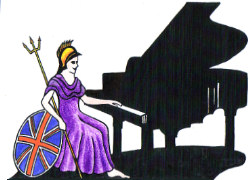Teachers, Accompanists and Piano Entertainers in the UK

UK Piano Page

Galways Mill
Leeds, West Yorkshire
England
Specialist piano dealer and wholesaler. Hundreds
170 Easterly Road
Oakwood
Leeds, West Yorkshire LS83AD
England
Suppliers of new and reconditioned acoustic pianos
7 Berkely Road
Dublin, County Dublin 7
Republic of Ireland
We have pianos for all standards. All pianos
Unit 2
Europa Enterprise Park
Midleton, County Cork
Republic of Ireland
We can supply all makes of new and reconditioned
Beverely Way
New Malden
New Malden, London KT3 4PH
England
I am the UK's largest stockist of fully
Music Festival for performers and guests Our 10th
18-06-2022 12:30PM
The Morecambe Bay Piano Group was set up to extend
11-12-2021 01:00PM
The Morecambe Bay Piano Group was set up to extend
08-01-2022 01:00PM
The Morecambe Bay Piano Group was set up to extend
12-02-2022 01:00PM